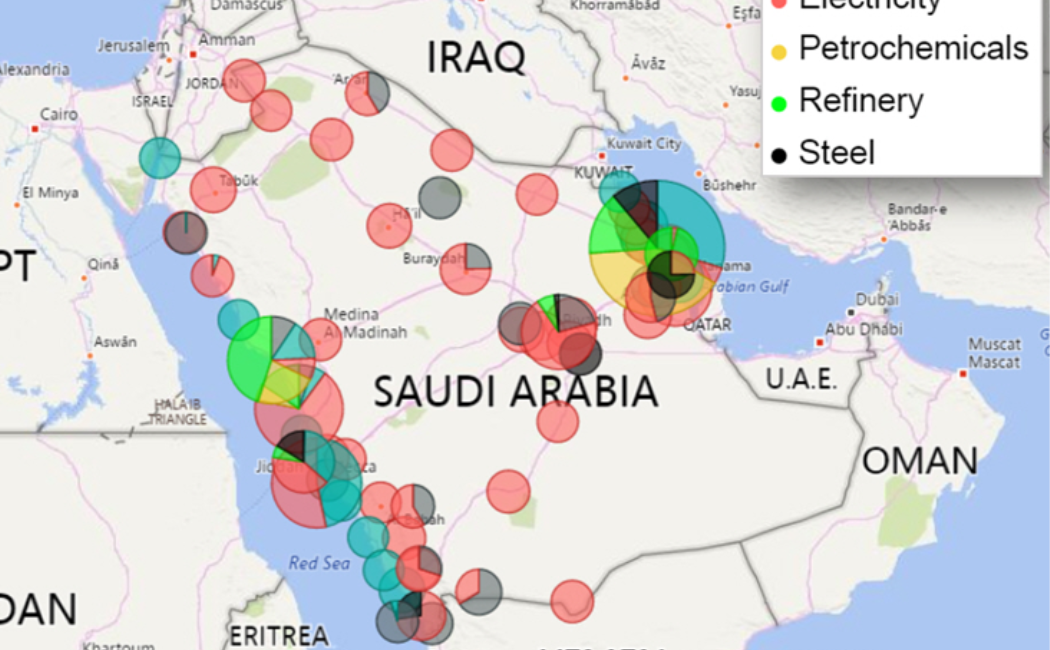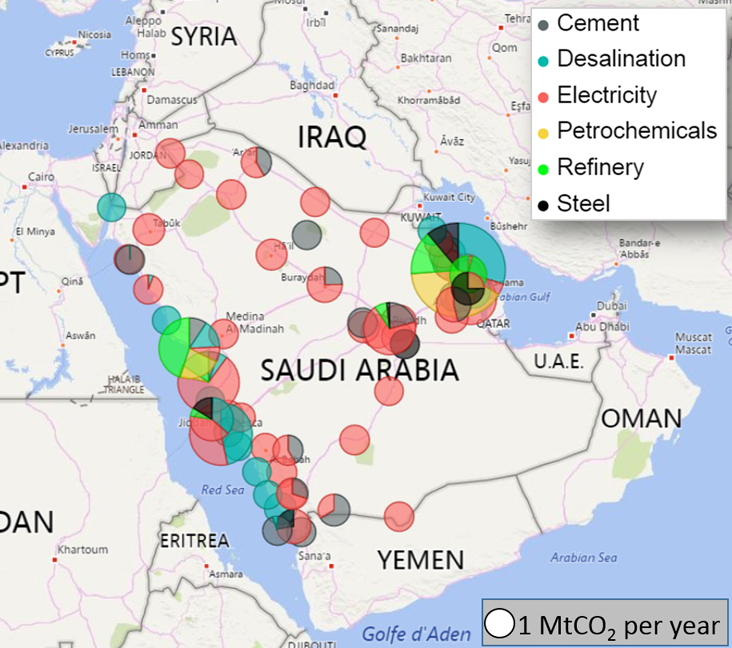.jpg?sfvrsn=39330263_0)
.jpg?sfvrsn=39330263_0)

06 November, 2017


Safeguarding the Environment: New Research at ANPERC Focuses on Storing and Trapping CO2 in the Subsurface
The world heralds the Kingdom of Saudi Arabia as one of the most important producers of the hydrocarbons that power modern life. But can the Kingdom also be one of the primary drivers in addressing the environmental challenge?
ANPERC's Professor Hussein Hoteit, together with recent KAUST graduate, Ali Hamieh, Dr. Nabil Abo-Khatwa from the Saudi Ministry of Economy and Planning (MEP), and Dr. Muntasir Shaikh from King Abdulaziz University (KAU) are currently studying the feasibility to store and trap the greenhouse gas CO2 in the subsurface rock structures in the Kingdom. This multi-institution research, which is conducted under the auspices of MEP may provide the Kingdom with one pathway among others towards addressing the climate change challenge.
Global warming is one of the major challenges facing humanity in the 21st century. Concurrent studies have shown strong correlations between the earth warming and the increase in greenhouse gas (GHG) concentrations, especially CO2 in the atmosphere. The trend of global CO2 emissions has been accelerating since the beginning of the Industrial Revolution. This situation urged policy makers from 195 countries, including Saudi Arabia, to agree to take measures to keep the global average warming below 2°C from the pre-industrial level. This goal could be achieved by reducing carbon emission rates. The Kingdom of Saudi Arabia, by ratifying the Paris Climate Agreement, has committed to taking measures to reduce CO2 emissions in tandem with executing Saudi Vision 2030, a comprehensive and ambitious plan to address different national economic and development challenges. Safeguarding the environment and preserving natural resources is a national milestone in both contexts. The energy sector will be challenged to adapt to stricter environmental regulations.
The effort began earlier this year, says Professor Hoteit. "In February 2017, a team from the Ministry of Economy and Planning, hosted by the Office of Saudi Affairs, visited KAUST to explore opportunities to collaborate and to leverage KAUST's strengths in engineering, environmental and earth sciences. The project collaboration was later extended to include Dr. Mohammed Moufti from King Abdulaziz University (KAU) in Jeddah."
What does the project mean scientifically?
The continuous influx of GHG to the atmosphere from various human activities is a major environmental challenge  facing the globe for years to come. With executing the Saudi
Vision 2030, the Kingdom has made a comprehensive and ambitious plan to address different national economic and development challenges. The Saudi energy sector will be challenged to adapt to stricter environmental regulations and competitiveness and
value creation will depend on the industry's ability to capitalize on carbon restrained economies. Carbon Capture and Storage (CCS) is an emerging field of basic and applied engineering and science aiming to store and trap CO2 in subsurface
rock formations.
facing the globe for years to come. With executing the Saudi
Vision 2030, the Kingdom has made a comprehensive and ambitious plan to address different national economic and development challenges. The Saudi energy sector will be challenged to adapt to stricter environmental regulations and competitiveness and
value creation will depend on the industry's ability to capitalize on carbon restrained economies. Carbon Capture and Storage (CCS) is an emerging field of basic and applied engineering and science aiming to store and trap CO2 in subsurface
rock formations.
"The ultimate goal of our project is to investigate the feasibility of CO2 storage in volcanic formations located in the western region of Saudi Arabia," explains Hoteit. "With this project, we have tackled three primary objectives: we created a detailed CO2 emission inventory of the main pollution sources in the Kingdom; we evaluated CO2 capture technologies specific to emitters' economic and technological constraints; and we identified potential CO2 subsurface traps to secure the gas and study the feasibility of CO2 storage in volcanic rock as shown in the map."
"Our key ambition is to help major industries such as power, desalination and petrochemical plants to contribute to Saudi Vision 2030 and the Paris Agreement while at the same time safeguarding the environment and preserving natural resources," Hoteit reflects.
At the beginning of the project, the team knew they'd need additional assistance with the work inherent in such an ambitious study. As it turns out, recent KAUST graduate Dr. Ali Hamieh, who completed his Ph.D. in Chemical Science earlier in 2017, possessed the background needed to round out the effort.
"I was lucky to join this interesting and important project under the supervision of Professor Hoteit after finishing my PhD. I acquired new skills about applying workflows and procedures to perform feasibility studies, analyzing massive amount of data, data verification, creating interactive geographic maps and other engineering aspects"
Although the project included important fundamental scientific questions, Dr. Hamieh also saw the potential to use his KAUST education to make a potential impact on humanity. "Being a leading research institute, KAUST has a significant role in providing technology and innovations to address local and global challenges. Some of the related research activities at KAUST are focused on developing efficient and low-cost disruptive solar and photo voltaic cells, synthesizing new materials to capture CO2 (Metal Organic Frameworks) providing catalysts to transform CO2 into useful chemicals, enhance efficiency through fuel combustion studies and many more," says Hamieh. For him, this was a unique opportunity to make a contribution to the GHG emission challenge.
At this early stage in the project, the team from KAUST, KAU and MEP has now completed a quantitative assessment of CO2 emissions from the main six industries in KSA, namely: electricity, desalination, refineries, cement, petrochemicals, and iron & steel industries, as well as road transport and other minor industries. The study also provides a detailed map of these CO2 sources and a summary of ideal capture technologies.
Currently, the team is investigating the potential of a CO2 storage site in a volcanic field (Harrat) near Madinah and a CO2 source from a refinery in Yanbu—which may provide a pathway to scale the process up to store large volumes of CO2. While the project is still in its early stages, the long-term potential for subsurface CO2 storage seems promising, and is expected to expand our understanding of geo-, chemo-, thermal- and mechanical processes in subsurface geologic formations. But more importantly, this work by ANPERC's Prof. Hoteit and his team places KAUST at the center of addressing one of humanity's biggest environmental challenges.